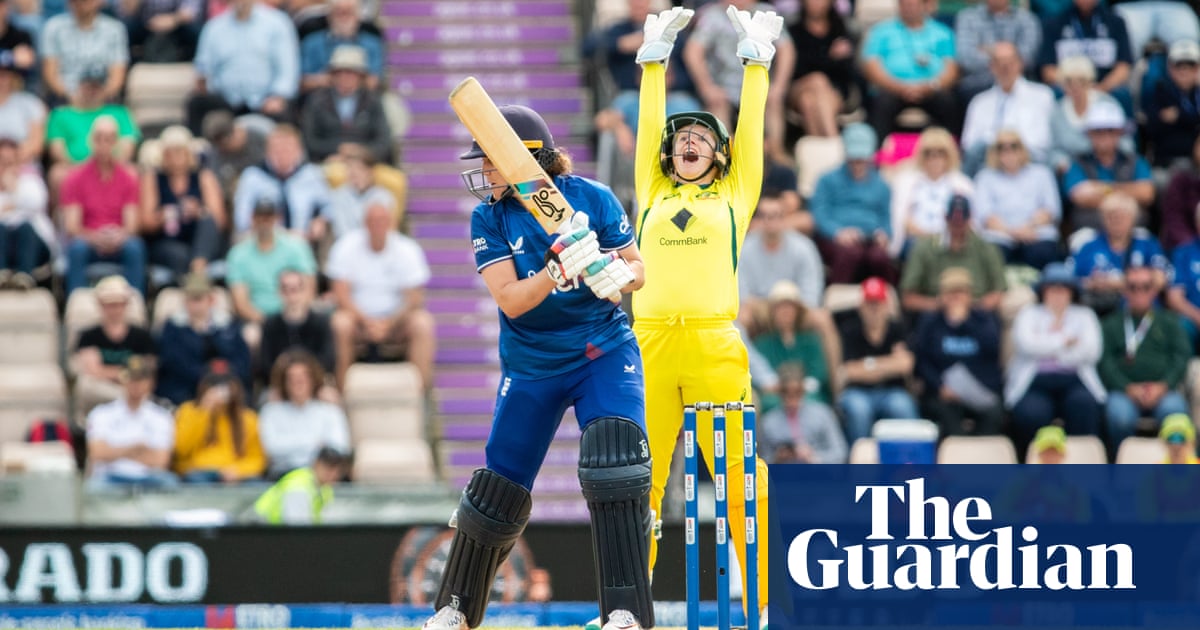Success of Women’s Ashes spectacle shifts the dial in a major way | Megan Maurice - 5 minutes read

The Women’s Ashes has a long history of close contests, drawn series and match-defining moments that have kept spectators on the edge of their seats. But in 2011, only a handful of people were at Bankstown Oval to witness Alex Blackwell’s bold declaration and Rene Farrell’s decisive hat-trick that swung the match in Australia’s favour and secured their first Ashes win since 2003.
What has changed most since then is not the cricket itself, but the number of people paying attention and, crucially, the number of spectators through the gates. Ground upgrades to venues such as the picturesque North Sydney Oval and Manuka Oval in Australia and the County Ground in Taunton, England have helped pave the way for this growth and more fans have been drawn in.
However, in the 2023 Ashes series, a decision was made to go even bigger. For the first time, the venues selected truly reflected the prestige of the series. While it may be tempting for organisers to wait for smaller grounds to sell out and have fans pooling at the gates or missing out for them to feel safe in shifting matches to larger venues, this series showed simply making the leap is often the best tactic.
The ODIs were still played at county grounds, but the Test and T20 matches showcased some of the top locations England has to offer: with Lord’s, The Oval, Trent Bridge and Edgbaston all opened up to host the stimulating contests. Choosing big grounds signals to fans that a match is important, that attending is desirable, even history-making. It elevates the contest and makes it something people want to be at.
When more than 20,000 fans packed the stands at The Oval for the T20, it was the first time a women’s international match had been played at the venue since 2009. The record Women’s Ashes crowd cheered England to a three-run victory, and left the Australians facing their first outright defeat since September 2021.
The second T20 at The Oval saw a record Women’s Ashes crowd. Photograph: Tom Dulat/ECB/Getty ImagesThree days later at Lord’s, along with the old guard in their “egg and bacon” ties and the usual cohort of cricket tragics, there were spectators who had just walked through the gates of the grand old ground for the first time. Among these groups there were discussions about the famous slope of the field and questions about why it wasn’t fixed. Lord’s was not the only ground to host first-time cricket spectators – they found their way into every venue of this Ashes series, buoyed up by the excitement of the close contest and the thrill of seeing old rivals clash.
skip past newsletter promotionSign up to The SpinSubscribe to our cricket newsletter for our writers' thoughts on the biggest stories and a review of the week’s actionPrivacy Notice: Newsletters may contain info about charities, online ads, and content funded by outside parties. For more information see our Privacy Policy. We use Google reCaptcha to protect our website and the Google Privacy Policy and Terms of Service apply.after newsletter promotionWhile traditionally women’s sport has tried to convert fans of the men’s game, this series has highlighted the power of women’s sport to provide an accessible entry point to those who may never have attended a men’s game – bringing totally new fans to the sport. Doing so at some of cricket’s most famous grounds would only have made the experience more exciting and memorable for those watching live cricket for the first time.
As the organisers of the 2020 Women’s T20 World Cup learned, there is merit in being bold with scheduling decisions. The pressure of scheduling an event at a big stadium often creates the circumstances necessary to fill it.
The Women’s Ashes series may have ultimately ended in a draw, with Australia retaining the trophy after winning the previous series, but there was plenty for England fans to take from it. England won four of the seven matches – securing the T20 and ODI series. In the end, it was Australia’s win in the Test match that proved the decisive factor. Here too was another sign of progress: a five-day women’s Test match for the first time since 1992, offering the greatest opportunity for a result.
As groundbreaking as the Ashes series was, it is not the only area where women’s cricket is making huge strides. Last week, Cricket Australia revealed the draw for the Women’s Big Bash League will include standalone matches at the MCG and SCG for the first time – another indicator that the prestige of the women’s game is being recognised. In the same week, the International Cricket Council announced equal prize money for men’s and women’s teams at all its future events.
Women’s cricket has moved forward in incremental steps for a long time, but every so often there are moments that shift the dial in a major way. After the pandemic took the wind out of the sails following the T20 World Cup final at the MCG, these substantial shifts are righting the ship and ensuring the sport continues to grow.
Source: The Guardian
Powered by NewsAPI.org